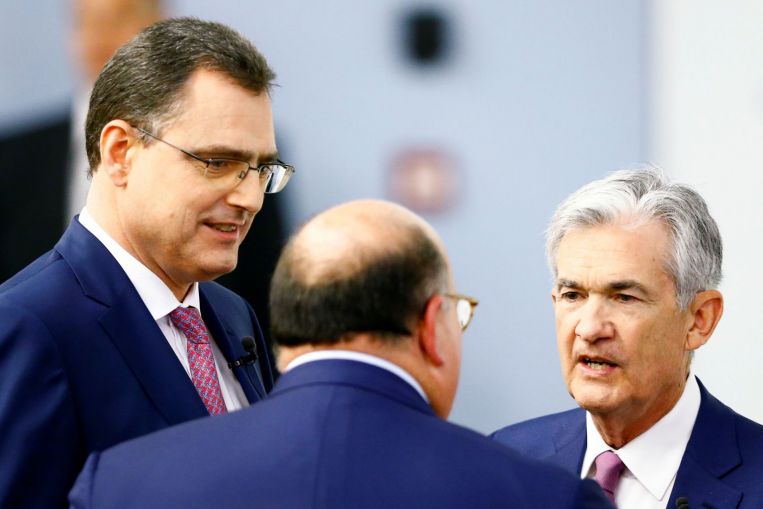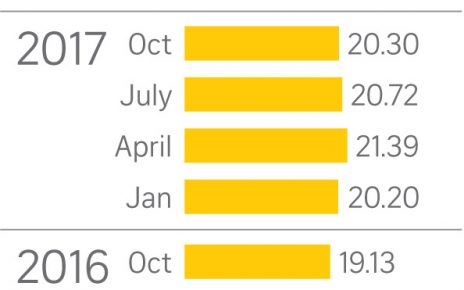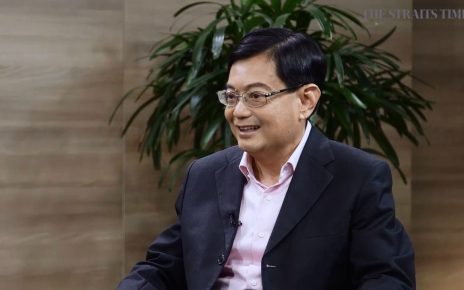
The Federal Reserve is committed to keeping the United States economic expansion going, its chairman Jerome Powell said in remarks that signalled the central bank is likely to cut interest rates for a second time at its Sept 17-18 meeting.
The US central bank is “not forecasting or expecting a recession”, Mr Powell said in comments on the heels of an August jobs report released in Washington that was mixed but somewhat assuaged fears of a recession.
Asked specifically about an interest rate cut, Mr Powell, who has been under fierce public pressure from President Donald Trump to cut rates, would say only that the Federal Reserve “would act as appropriate to sustain the expansion”.
“The Fed has through the course of the year seen fit to lower the expected path of interest rates. That has supported the economy,” he said. “That’s one of the reasons why the outlook is still a favourable one despite these crosswinds we’ve been facing.”
The Federal Reserve last cut interest rates by a quarter point on July 31 – the first rate cut since the 2008 sub-prime crisis. Analysts expect another quarter-point cut.
The jobs report was below expectations. The economy added just 130,000 new jobs last month – evidence that hiring has slowed. But unemployment remained at 3.7 per cent for the third month in a row, meaning the number of unemployed persons, at six million, remained essentially unchanged.
The return of optimism still somewhat hinges on the outcome of trade talks with China, which resume at a senior level next month .
Returning to the table is in itself a good thing, White House economic adviser Larry Kudlow said. “It is good thing that they are coming here, and tempers are calmer now,” he told CNBC.
But he refused to say how the talks would go, adding: “We’re engaged in very important discussions across the board, whether it’s agriculture or IP (intellectual property) or tech transfer or cloud or cyber hacking or trade barriers. You know, we’ll see what happens.”
“This is the first face-to-face meeting now in several months,” he noted. “But I don’t want to predict. I’m just saying I think it’s very positive that we negotiate. And it may well be… that something positive comes out of that.”
Mr Trump ignited the trade war in January last year after talks with China failed to yield agreement, in the shape of tariffs on solar panels, washing machines, steel and aluminium – and not just from China.
In retaliation, Beijing targeted US agriculture imports including sorghum and soya beans.
Since then, there has been an expanding tit-for-tat cycle of tariffs. In less than two years, the US’ average tariff on Chinese imports has exceeded 24 per cent, compared with an average of only 3 per cent at the onset of the trade war, according to an analysis by the Peterson Institute for International Economics. This affects almost everything Americans purchase from China.
But the ramifications have been global, with China-dependent supply chains disrupted.
Besides China, where job losses from the trade war are estimated at two million to three million, other export-reliant economies such as South Korea, Japan and Taiwan have seen factory activity shrink. Coupled with a slowdown in Europe, this has raised fears of a global recession.
In Zurich, Mr Powell predicted continued if moderate expansion for the US economy.
While there remain significant downside risks, “incoming data for the US suggests that the most likely outlook for the US is still moderate growth, a strong labour market, and inflation continuing to move back up”, he said.
While headline numbers in the August jobs report were below expectations, they showed that the US economy is being propped up by consumer spending, analysts said.
Employment in the federal government rose, reflecting the hiring of temporary workers for the 2020 census. The mining sector lost jobs, but there were gains in healthcare and financial services.
In network TV interviews, Mr Kudlow, who is director of the National Economic Council, put a positive spin on a generally unexciting report, citing household survey data showing more workers aged 25 to 54 were working or seeking work. Wages were also holding up, with average hourly earnings up 3.2 per cent from August last year.
Renaissance Macro Research tweeted: “The employment-to-population ratio has jumped to a cycle high. Labour market conditions are still improving, on net, albeit more slowly than before.”



